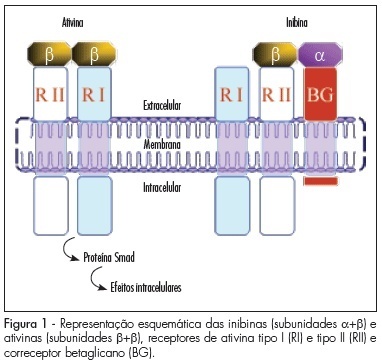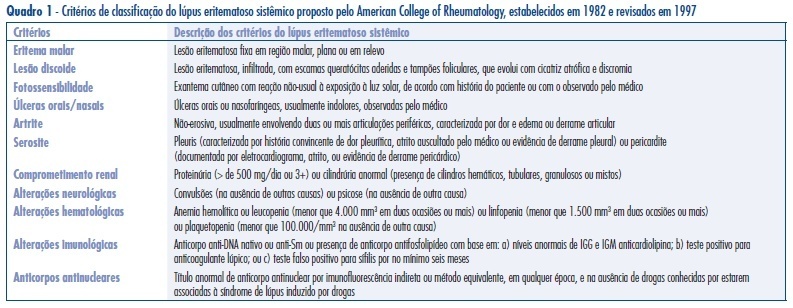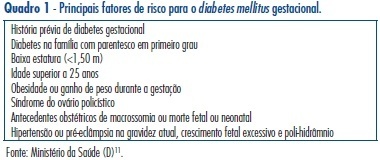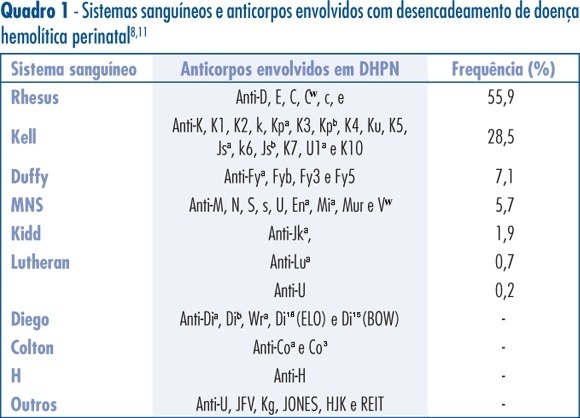Summary
Revista Brasileira de Ginecologia e Obstetrícia. 2010;32(4):176-183
DOI 10.1590/S0100-72032010000400005
PURPOSE: to estimate the prevalence infection of human immunodeficiency virus (HIV), human T-cell lymphotropic vírus (HTLV), hepatitis B virus (HBV), Chlamydia trachomatis (C. trachomatis) and syphilis in pregnant women, as well as risk factors associated with these infections, in Fundação de Medicina Tropical do Amazonas (FMTAM). METHODS: a cross-sectional study was carried including 674 pregnant women consecutively attended of the spontaneous demand of FMTAM between March and September 2008. Demographic, epidemiologic, socioeconomic, clinical and obstetric information have been collected through specific questionnaires. Patients had blood sample collected by peripheral venous for accomplishment of serological tests of HIV, HTLV, HBV and syphilis. Cervical secretion sample has been collected for C. trachomatis antigens detection test. The Odds Ratio has been used to evaluate risk factors associated to infections. Statistical analysis has been done with the t-Student, χ2 and Fisher's exact tests. RESULTS: the average age was 23.9 years old (SD 6.3). The observed prevalence was 0.6% to infection by HIV; 0.7% by HBsAg; 1.0% of syphilis and 2.7% by C. trachomatis. All the samples went negatives to HTLV. There were no variables associated with infection by HIV, HBV and syphilis. Significative statistically association was observed between pregnant woman with age under 20 years and of first pregnancy with C. trachomatis infection. CONCLUSIONS: the study evidenced that the prevalence infection by HIV in pregnant women assisted in FMTAM is similar to the values described in the Brazilian literature, while the prevalence by HTLV, HBV, syphilis and C. trachomatis in the studied population are below found by other authors. The main risk factor for the infection by C. trachomatis was being under 20 years old.
Summary
Revista Brasileira de Ginecologia e Obstetrícia. 2009;31(12):621-625
DOI 10.1590/S0100-72032009001200008
The main source of inhibin B in women is the growing follicle granulosa cells, while inhibin A is mainly produced by the corpus luteum and the placenta. In infertile women submitted to therapies of assisted reproduction, inhibin B has shown to be useful to predict a poor ovulatory response, though it has not yet overcome the performance of other markers. In the pre-natal screening of the Down syndrome, inhibin A has been repeatedly confirmed as useful in the second trimester and has also started to be considered in the first trimester test battery. Besides the two applications above, the dosage of total inhibin may contribute to the identification of cases of autoimmune ovarian insufficiency. Total inhibin may also be an auxiliary marker in the diagnosis of ovarian epithelial tumors, while the amount of inhibin B helps in the diagnosis of granulosa cells tumors. The use of inhibin A may be extended to the evaluation of pregnant women with risk of abortion, with a history of repeated abortion, with increased risk of pre-eclampsia, or even in the first days of follow-up of hydatiform mole post-emptying. All those applications are still under study, but with a real possibility of helping to extend the diagnostic spectrum of inhibin dosage in Gynecology and Obstetrics.

Summary
Revista Brasileira de Ginecologia e Obstetrícia. 2009;31(11):534-539
DOI 10.1590/S0100-72032009001100002
PURPOSE: to analyze the ophthalmic artery functioning in pregnant women with systemic lupus erythematosus (PL) without active renal disease as compared to non-pregnant women with lupus (NPL) without active renal disease, and to normal pregnant women (PN). METHODS: observational study that analyzed ophthalmic artery dopplervelocimetric variables of 20 PN, 10 PL and 17 NPL women. The variables analyzed were: pulsatility index (PI), final diastolic velocity (FDV) and velocity peak ratio (VPR). Mean and standard deviation of these indexes were calculated. For group mean comparison, analysis of variance (ANOVA) and the post-hoc Tukey test have been used, with confidence interval of 95% (p<0.05). RESULTS: the PN group showed the following means and standard deviations of ophthalmic artery parameters: PI=2,4±0,3; VPR=0,5±0,1 e FDV=5,1±2,1 cm/s. The PL and NPL groups showed the following values, respectively: PI=2,0±0,4 and 1,9±0,4; VPR=0,6±0,1 and 0,6±0,1; FDV=9,7±3,9 cm/s and 8,1±4,3 cm/s. There was not significant mean difference between the PL and NPL groups for PI, VPR or FDV. However, statistically significant mean differences were observed between PN and PL for PI, VPR and FDV, with higher values of FDV and VPR in the PL group. CONCLUSIONS: there was a reduction of ophthalmic artery vascular impedance with orbital hyperfusion in the two groups of women with lupus erythematosus as compared to normal pregnant women. These results may help to improve the understanding on pathophysiology of systemic lupus erythematosus. In addition, the present method may be applied in future studies as a complementary procedure for the differential diagnosis between pre-eclampsia and renal failure due to lupus.

Summary
Revista Brasileira de Ginecologia e Obstetrícia. 2009;31(9):440-446
DOI 10.1590/S0100-72032009000900004
PURPOSE: to verify the occurrence ratio of pica in pregnant women and its impact on the mother and newborn health. METHODS: prospective study with 227 adult pregnant women and their newborns treated at the Maternity School of Universidade Federal do Rio de Janeiro, between 2005 and 2006. Pica has been considered as the ingestion of inedible substances or atypical food combinations. The data was collected was done by medical chart review and interview. RESULTS: Pica was referred to by 14.4% of the women, 42.1% of whom practiced it daily. The onset occurred in the second gestational trimester in 46.7% of the cases, and, in the third trimester, in 30% of them. Among the alleged reasons, 65% of the women were unable to give them, 15% declared relief of nausea and heartburn and 10% reported reduced stress and anxiety. The practice in the previous gestation/puerperium was referred to by 15% of the women. Pica was not associated with the maternal anthropometric condition, the skin color, the marital status, the maternal schooling and the presence of parasitosis. There was no difference between the average of the total family income and the number of gestations for the women who did or did not have pica. Pica was associated with gestational anemia (p<0.009) and gestational intercurrences (OR=3.5; CI95%=1.6-7.9). As for the baby, pica did not interfere in the health parameters at birth: weight, gestational age and intercurrences. CONCLUSIONS: pica must be investigated at prenatal assistance and recognized as a risk factor for the mother's health.
Summary
Revista Brasileira de Ginecologia e Obstetrícia. 2009;31(7):367-374
DOI 10.1590/S0100-72032009000700008
A good quality prenatal assistance is essential to warrant perinatal and maternal health. Nowadays, due to the evolution of diagnostic methods and the change in illness prevalence, such as the increase in diabetes and sexually transmitted diseases, several propedeutic procedures are available. This introduces further difficulty for clinicians to select the most adequate procedures and when to apply them during gestation, assuring the best results for both mother and infant. The present review aimed at evaluating the main prenatal routine tests on the basis of the best scientific evidence presently available.

Summary
Revista Brasileira de Ginecologia e Obstetrícia. 2009;31(6):311-319
DOI 10.1590/S0100-72032009000600008
Alloimmunization is the formation of antibodies when there is an exposition of the individual to non-self antigens, as it occurs, for example, in the transfusion of incompatible blood and pregnancies, in whom the fetus express in its sanguineous cells antigens exclusively of paternal origin. This article is restricted to the alloimmunization against erythrocytes antigens in obstetric patients. Almost all the anti-erythrocytes antibodies can be fit in one of the 29 systems of already recognized sanguineous groups, being more implied in the hemolytic disease of the newborn anti-D, anti-c and anti-Kell, followed by anti-C, anti-E, anti e, anti-Fyª and anti-Jkª. The research of irregular antibodies, to permit the diagnosis of alloimmunizated people, and the modern genetic techniques have better characterized these patients for the prophylaxis and prenatal segment. The traditional accompaniment of the gestations of risk for hemolytic disease of the newborn, with the spectral analysis of the amniotic liquid and the intraperitoneal transfusion, has being quickly substituted for the Doppler ultrasound evaluation in the middle cerebral artery, the intravascular transfusion guided for ultrasonography in real time, beyond improvements in the materials and the quality of the blood, that in set, have raised the survival of the attempting fetus. Doubtlessly, the correct application of the prophylaxis with use of anti-D is successful with potential to reduce the alloimmunization cases.

Summary
Revista Brasileira de Ginecologia e Obstetrícia. 2009;31(5):249-253
DOI 10.1590/S0100-72032009000500008
PURPOSE: to compare the expression of tumor necrosis factor-alpha (TNF-α) in ovular membranes with premature rupture (MPR) and with opportune rupture; to verify the association between the expression of the TNF-α in ovular membranes and the degree of chorioamnionitis, correlating the expression of the TNF-α and the membranes' time of rupture. METHODS: ovular membranes from 31 parturients with MPR, with gestational ages over 34 weeks, and from parturients with opportune membranes' rupture, with gestational ages equal or over 37 weeks. Chorioamnionitis detection has been done by histopathological analysis. The evaluation of the TNF-α expression has been done by immune-histochemical technique, using the labile streptavidin-biotin-peroxidase (LSAB) method. RESULTS: the average rupture time was 16.6 hours. The ratio of the TNF-α expression in the Control and Study Groups did not show a significant difference (χ2=6.6; p=0.08). In the Study Group, there was no correlation between the degree of chorioamnionitis and the intensity of TNF-α expression (Spearman's coefficient (Rs)=0.4; p=0.02). CONCLUSIONS: there was no significant difference between the TNF-α expression in ovular membranes with premature or opportune rupture; in the Study Group, there was significant association between TNF-α expression and the degree of chorioamnionitis, and there was no association between rupture time and the intensity of TNF-α expression.